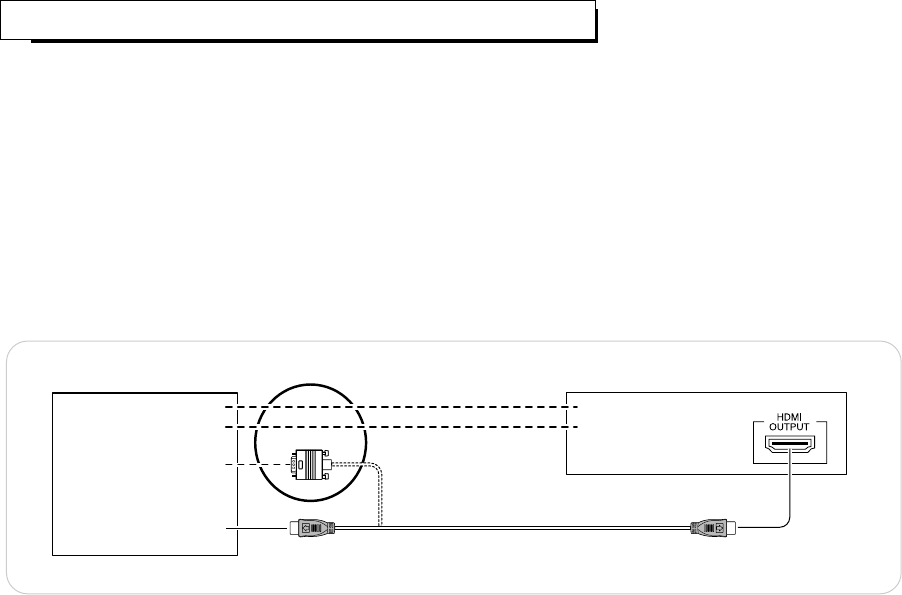
9
• If you have a HDMI INPUT connector equipped TV or projector, etc., connect it to the HDMI OUTPUT connector of this unit
using a commercially available HDMI cord.
The HDMI connection can carry uncompressed digital video and multi-channel digital audio signals.
• Among the HDMI INPUT connector equipped TV or projector, etc., some do not support audio output(for examples,
projectors).
In such a case, make an audio connection between this unit and A/V receiver.
• If you have a DVI INPUT connector equipped TV or projector, etc., compatible with both DVI and High-bandwidth Digital
Content Protection (HDCP), connect it to the HDMI OUTPUT connector of this unit using a commercially available HDMI-DVI
converter cord.
Since the HDMI-to-DVI connection cannot carry audio signals, you should make an audio connection. (For details on audio
connection, refer to the operating instructions of the DVI INPUT connector equipped component.)
• If you have a HDMI or DVI connector equipped A/V receiver/amplifier, you can connect this unit to TV or projector, etc.,
through A/V receiver/amplifier. (For details on connection between components, refer to the operating instructions of your
receiver/amplifier.)
Notes:
• When connecting the HDMI OUTPUT connector to TV or projector, etc., you should set the HDMI OUTPUT, HDMI FORMAT,
VIDEO OUTPUT and AUDIO OUT. (For details, refer to “SETTING THE VIDEO SETUP” on page 33 and “When selecting the
AUDIO OUT” on page 41.)
• This unit supports HDCP (High-bandwidth Digital Content Protection), a protection system for digital video.
If the DVI INPUT connector equipped component does not support HDCP, the image will not be output properly.
• This unit supports HDMI (High Definition Multimedia Interface) version 1.1.
CONNECTING TO TV WITH HDMI INPUT CONNECTOR
This unit
(analog) AUDIO INPUT
DIGITAL INPUT
(analog) AUDIO OUTPUT
DIGITAL OUTPUT
DVI and audio connections
or
DVI
INPUT
HDMI
INPUT
TV, projector, etc.


















